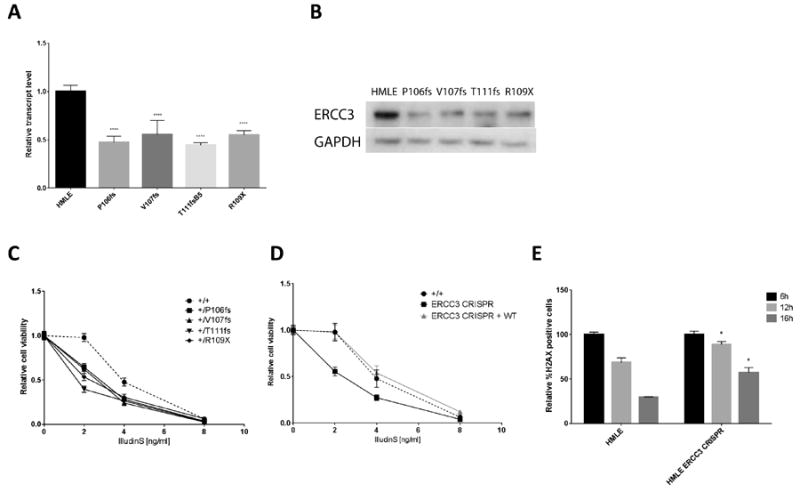Figure 3.

Modeling of ERCC3 R109X by CRISPR/Cas9 in a mammary epithelial cell line and functional analysis. (A) ERCC3 transcript and (B) protein levels in HMLE and CRISPR/Cas9 edited cells lines modeling the heterozygous R109X mutation. (C) Relative cell viability of HMLE control and CRISPR edited cell lines at 72 hours following treatment with increasing doses of IlludinS. Data represents the mean of three experiments with error bars representing the SEM. (D) Relative cell viability of HMLE control and combined CRISPR edited cell lines (with and without re-expression of the wild-type ERCC3) following treatment with IlludinS. (E) Quantification of phosphorylated H2AX by flow cytometry in HMLE control and CRISPR edited cell lines harvested at different time points after DNA damage.
